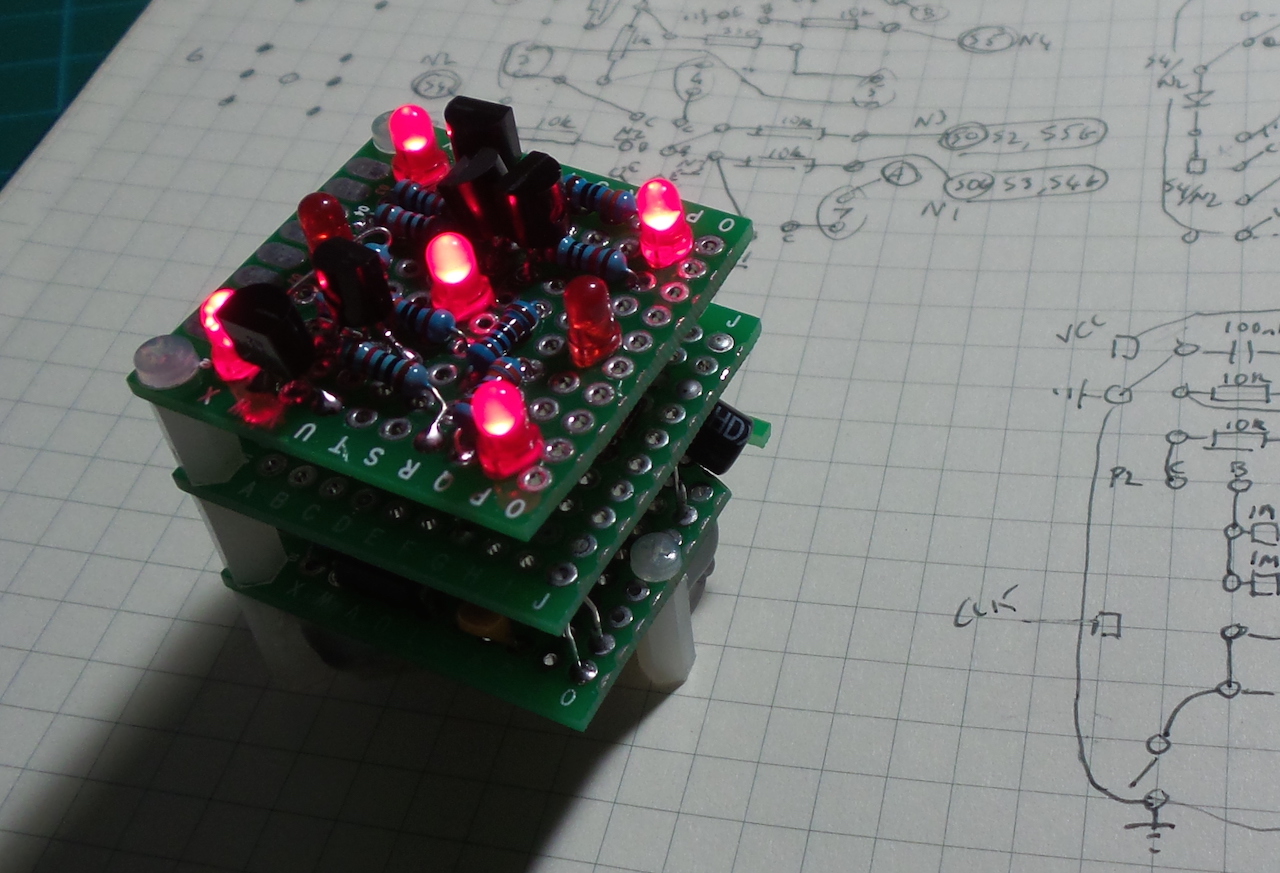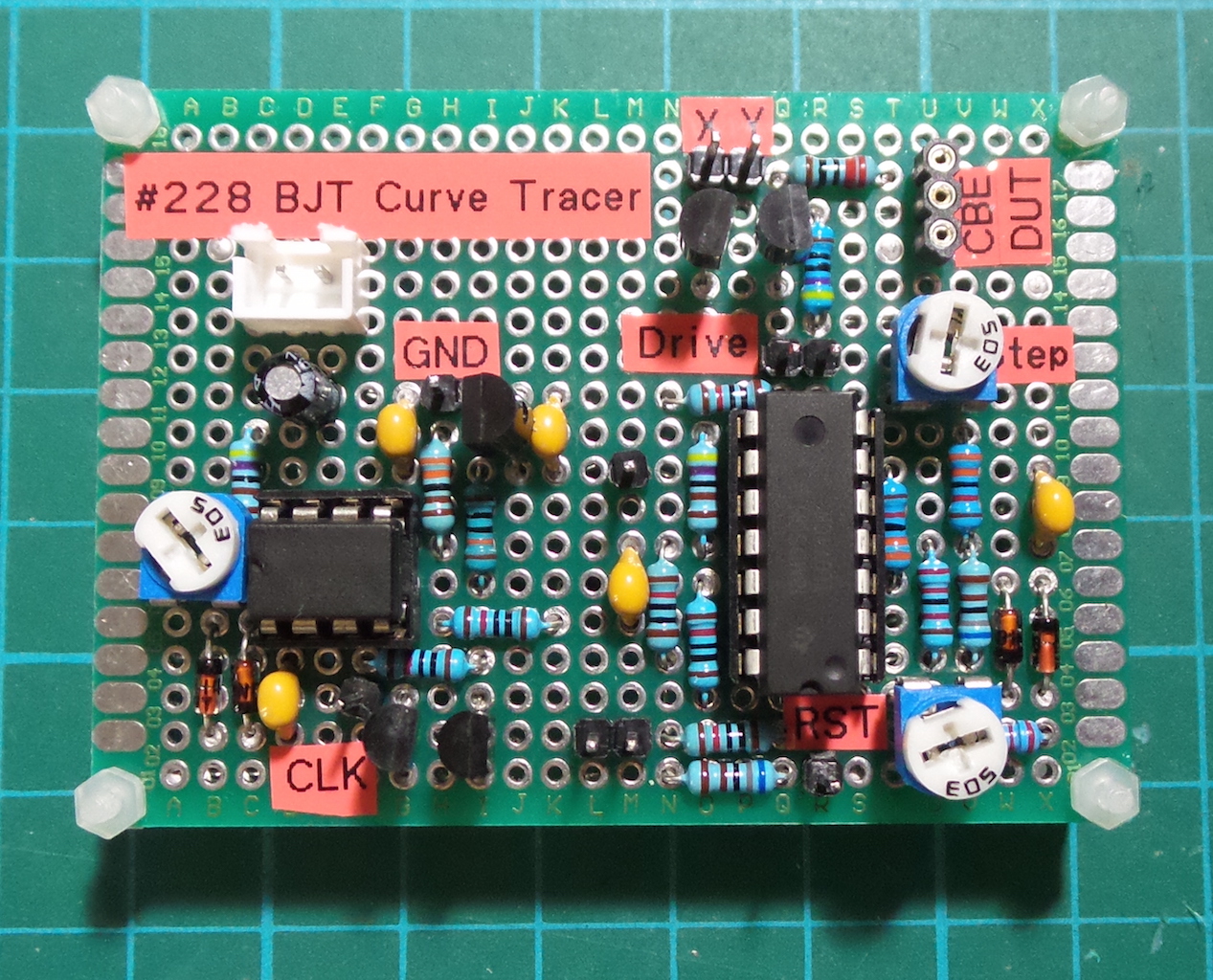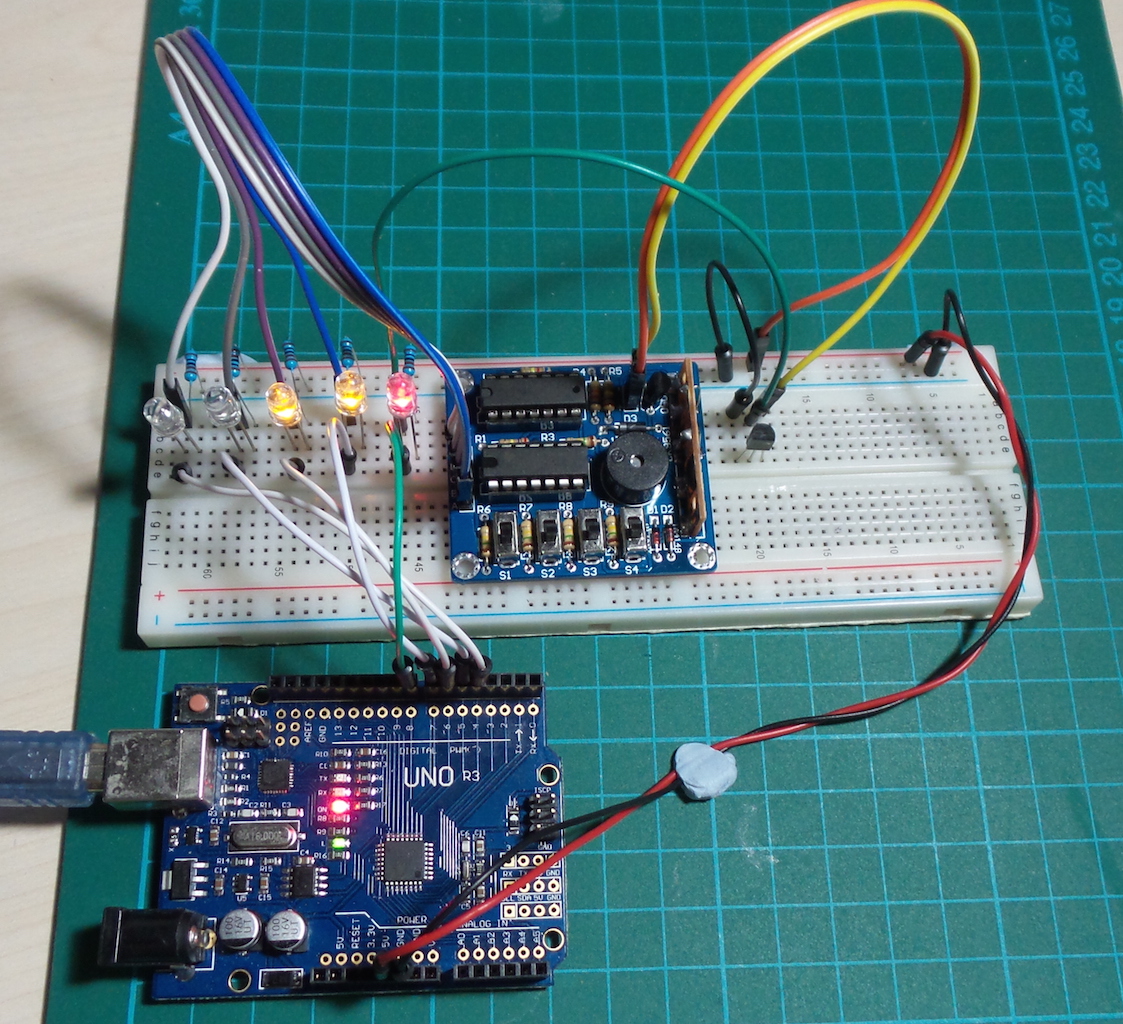LEAP#229 Dice
This is my deluxe version of a 555/4017-based dice circuit. It’s got slow-down and auto power-off,
but is also craftily packed into a cube. All the inards are exposed, but I think that’s a good thing.
Perhaps the next step would be to cast it in clear resin?
As always, all notes, schematics and code are in the Little Electronics & Arduino Projects repo on GitHub

This project is a combination of circuit ideas. It breaks down into 5 main systems:
- Counter: The 555 timer and CD4017 provided a clocked 1-of-6 line output
- Die Display: A network of steering diodes and transistors decode the 6 outputs to a 7-LED conventional dice display
- Counter roll & slowdown: An RC network and high-side PNP switch slow the counter speed over time until the “roll” stops
- Auto Power-off: a p-channel MOSFET with RC timer cuts the circuit power after the roll
- Trigger: a mercury switch simulates a “shake”
Here’s a quick video of the dice in action:
read more and comment..
LEAP#228 Transistor Curve Tracer
This is a fascinating circuit, originally from the IEEE Engineering Sciences & Education Journal Vol 8 No 1 Feb 1999 pp25-26.
I’m working from a demonstration by w2aew.
It actually builds on the basic StairStepGenerator project and adapts it to perform basic NPN BJT curve tracing -
plotting collector currect to collector voltage for different base current values.
 It generates curves like this..
It generates curves like this..
 As always, all notes, schematics and code are in the Little Electronics & Arduino Projects repo on GitHub
As always, all notes, schematics and code are in the Little Electronics & Arduino Projects repo on GitHub
read more and comment..
LEAP#227 KnightRider with a 555 Timer
This is a well-known LED effects circuit using the 555 timer and 4017 decade counter.
The 555 timer is configured as an astable multivibrator, with a frequancy of 10.5 Hz at ~50% duty cycle.
The clock signal from the 555 drives the 4017 decade counter, providing 10 signal lines.
The 10 outputs of the 4017 (Q0 to Q9) are wired to the appropriate LEDs with steering diodes to generate the “Knight-Rider” pattern
 As always, all notes, schematics and code are in the Little Electronics & Arduino Projects repo on GitHub
As always, all notes, schematics and code are in the Little Electronics & Arduino Projects repo on GitHub
read more and comment..
LEAP#226 Music Box Kit
This is a pretty common kit available from multiple sources, although it appears to have been originally produced by icstation.
The heart of the kit is a a potted chip, one of many similar boards primarily produced as the sound effects generators used in toys.
the kit adds supporting circuitry on a PCB to drive a piezo speaker and decode 4 switch inputs to select one of 16 effects.
As demonstrated here, it is possible to drive the board with a microcontroller.
As always, all notes, schematics and code are in the Little Electronics & Arduino Projects repo on GitHub

Does this generate good sound effects? No! Twee at best, horribly poor immitation at worst. But if you want to sound like a cheap toy, this may be exactly what you need;-)
read more and comment..